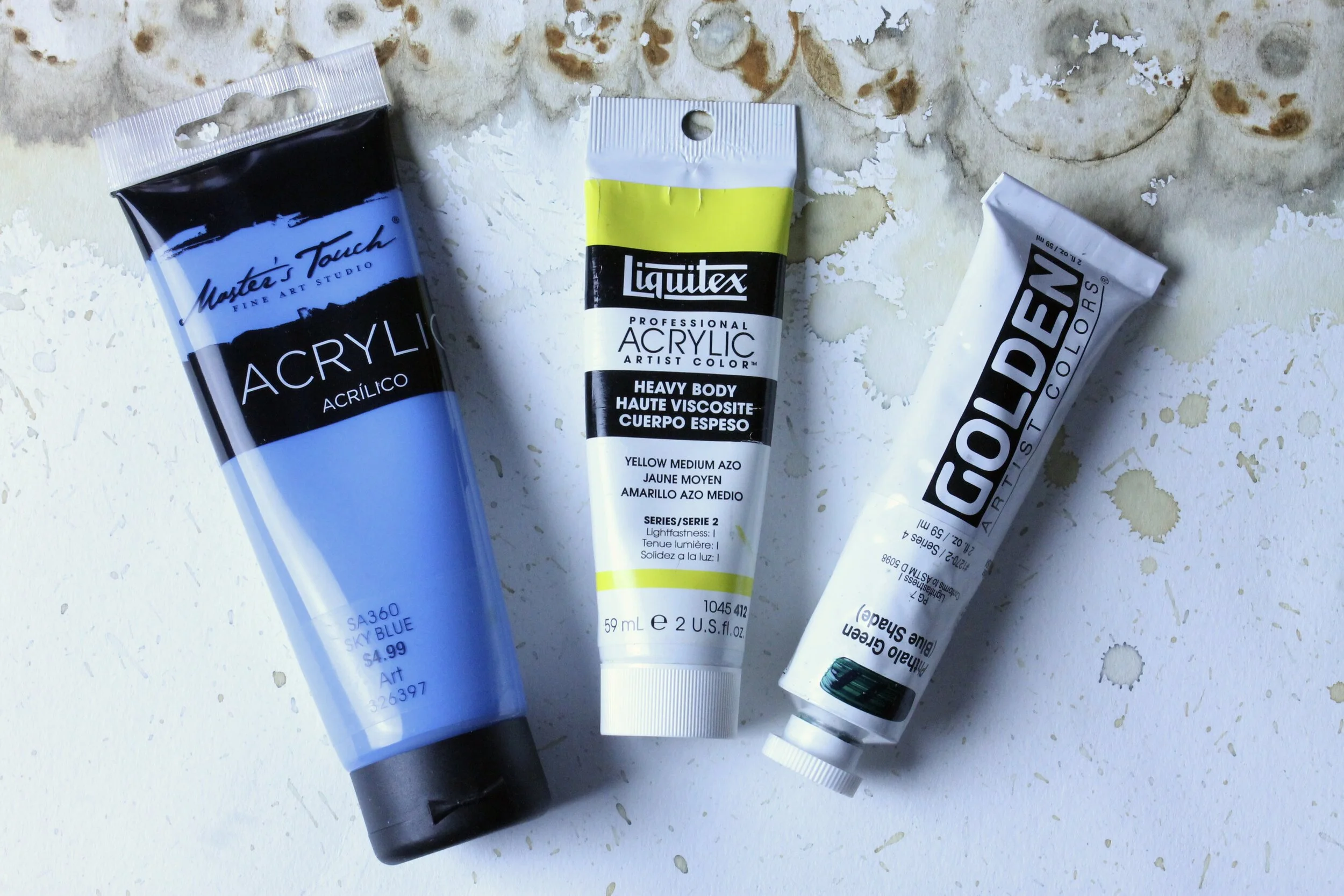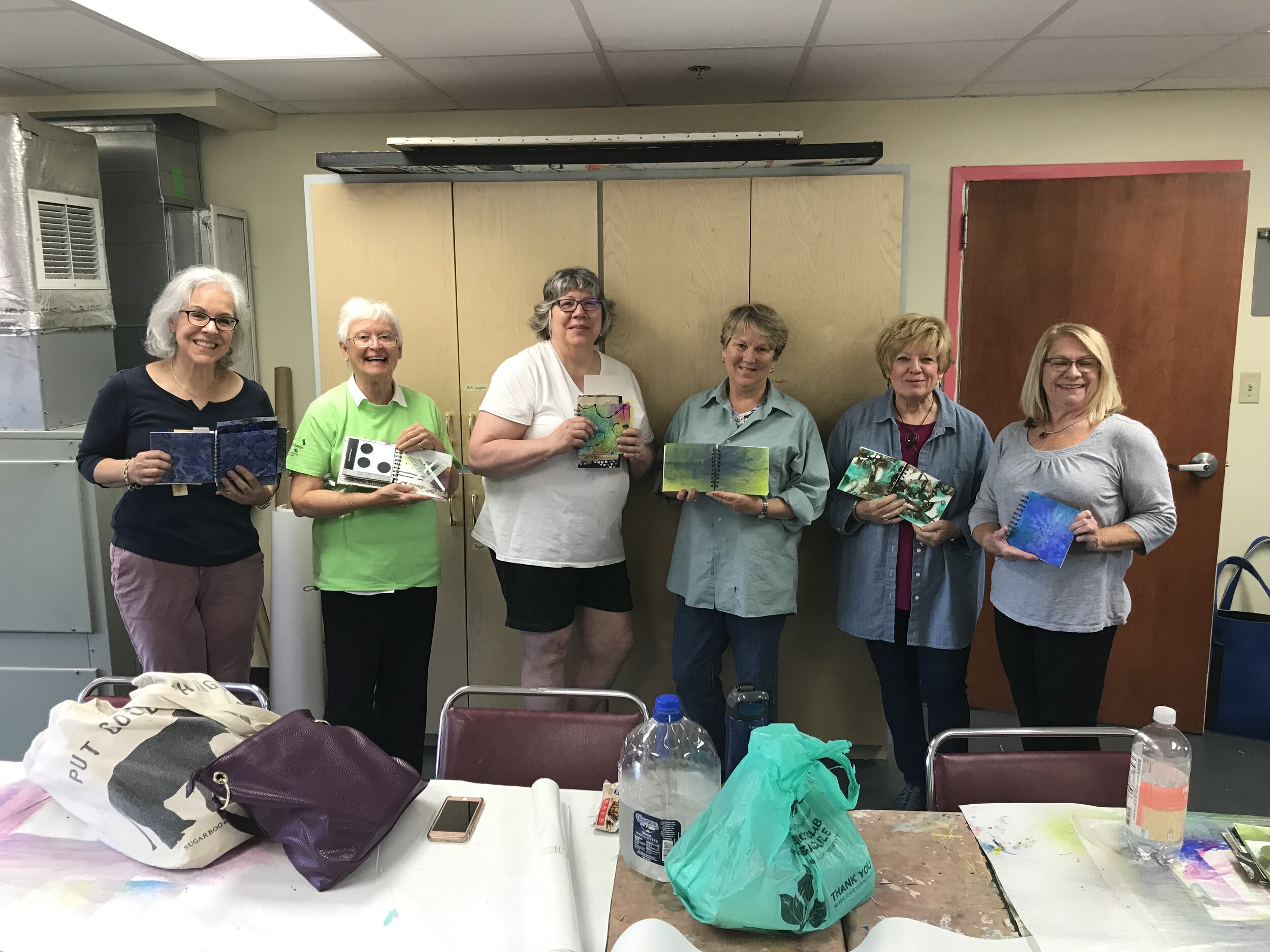In this week’s Printmaking post, I will discuss the color that can be applied to your plate. Depending on your printing preference (I love grungy, multi-layered prints), color can be applied in a wide variety of ways.
Lower End Liquid Acrylic Paints
My go-to when it comes to color is acrylic. I use anything from the liquid kind shown above (the cheap kind that you can find in abundance at any craft store) to higher end paint (see image below), which is thicker and takes more effort to evenly distribute over the plate.
Higher End Acrylic Paints
I do want to mention that the type of paint that you use will impact how your prints turn out. While the liquid acrylic paints are easier on your wallet, I am not always excited about how the color dries due to the low quality of pigment used in the paint. Higher end acrylic paints may cost more up front, but I am happier with the results.
When you first start printing, I recommend using the lower quality paints. Printing is an addictive art form! You can easily spend an entire afternoon experimenting with your printing plate. This is great for accumulating papers for bookmaking and collages and you do go through A LOT of paint when you are first learning how to print.
Various India Inks
While I typically prefer to use acrylic paints, I do use other mediums to print. India Inks are some of my favorite when I want to prep papers to print. I will make various marks (such as lines, dashes, splatters). Adding marks prior to printing will add depth and texture to your prints.
Watercolors
Watercolors are another medium that I use with my prints. I use them like I do India inks. I make marks on blank paper as a way to prep paper for printing. While I enjoy using papers I found or salvage, I also use new paper when.creating covers for books that I will eventually sell. That paper is a heavier weight and can withstand several layers of wet mediums.
You don’t always need the most high end art supplies to create a beautiful print. Buying watercolors at your local grocery store will work just as effectively as the high end ones you would find at an art store. But as your learning your printmaking style, start off easy (and cheap!) with your supplies.
Are you getting excited and ready to print! I know I am! Starting in April, I am going to participate in a 30 Day Mark Making Challenge. I have done these in the past and they are loads of fun! So what do you say? Want to join me in making some fun and funky artist books?




























